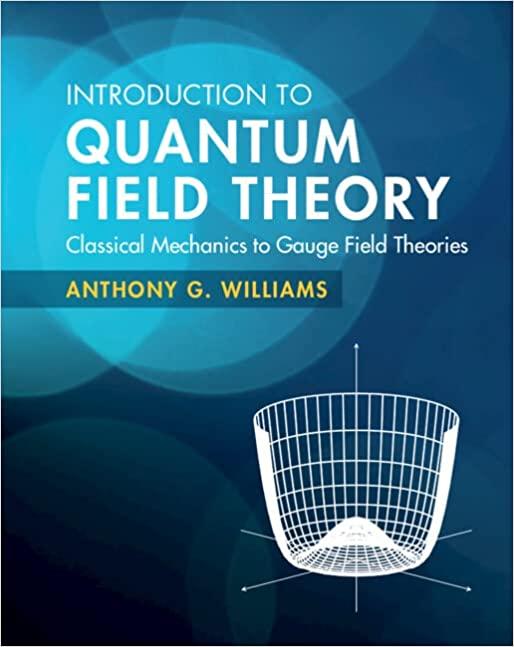The Poincar group is a subgroup of a larger Lie group, the conformal group (C(1,3)). This fifteen-parameter
Question:
The Poincaré group is a subgroup of a larger Lie group, the conformal group \(C(1,3)\). This fifteen-parameter group consists of the 10-parameter subgroup of Poincaré transformations, the one-parameter subgroup of scale transformations (dilatations) and the four-parameter subgroup of special conformal transformations (SCT). The generators of the unitary representation of the group are \(P^{\mu}=i \hbar \partial^{\mu}\) (translations), \(M^{\mu u}=i \hbar\left(x^{\mu} \partial^{u}-x^{u} \partial^{\mu}\right)=x^{\mu} P^{u}-x^{u} P^{\mu}\) (Lorentz transformations), \(D=i \hbar x^{\mu} \partial_{\mu}=x \cdot P\) (dilatations), and \(K^{\mu}=i \hbar\left(2 x^{\mu} x \cdot \partial-x^{2} \partial^{\mu}\right)\) \(=2 x^{\mu} D-x^{2} P^{\mu}\) (SCT). Using \(\left[P^{\mu}, x^{u}\right]=i \hbar g^{\mu u}\) we have already seen that \(P^{\mu}\) and \(M^{\mu u}\) satisfy the Lie algebra of the Poincaré group. Show that the remaining commutators of the Lie algebra of the conformal group are \(\left[D, P^{\mu}\right]=-i \hbar P^{\mu},\left[D, K^{\mu}\right]=i \hbar K^{\mu},\left[D, M^{\mu u}\right]=0\), \(\left[K^{\mu}, P^{u}\right]=-i \hbar 2\left(M^{\mu u}+g^{\mu u} D\right),\left[K^{\mu}, K^{u}\right]=0\) and \(\left[K^{\mu}, M^{ho \sigma}\right]=i \hbar\left(g^{\mu ho} K^{\sigma}-g^{\mu \sigma} K^{ho}\right)\).
Step by Step Answer:

Introduction To Quantum Field Theory Classical Mechanics To Gauge Field Theories
ISBN: 9781108470902
1st Edition
Authors: Anthony G. Williams





